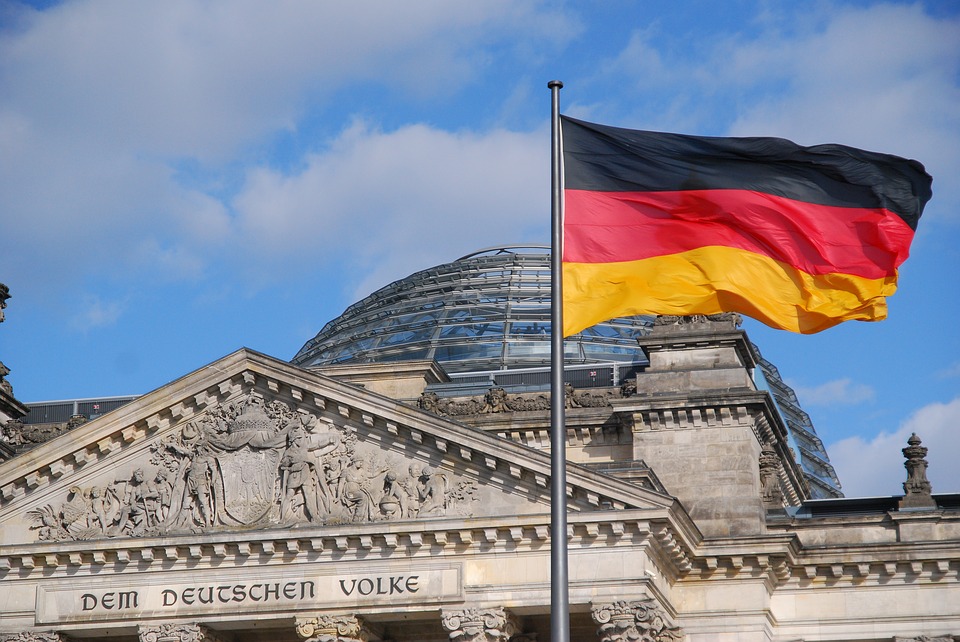The idea of the flag was born between the 800s and the early 900s when modern states were forming in Europe. Until the early 19th century, Germany was divided into hundreds of more or less autonomous territories. There were larger and more powerful states, notably Prussia and Austria, and there was the emperor of the “Holy Roman Empire” who had very limited power over the states that existed on the territory that is now Germany. Flags did not exist at that time, only the coats of arms of the various noble and royal houses. A flag with the three colors black, red, and gold (but with the order of colors reversed) was displayed for the first time in 1832 during a national and democratic demonstration at Hambach Castle. The patriots gathered at Hambach, who desired a united and democratic Germany, had chosen these colors as a symbol of recognition for their political ideas. The combination of the three colors is rather the result of a misunderstanding. In the absence of anything that could unite the different regions of Germany, many patriots, even though they had a democratic spirit, dreamed of the old medieval kingdom when the emperor was still a unifying symbol, and the coat of arms was a black eagle on a golden background.
The colors red and black were the colors of the uniforms of the “Lützowsche Freikorps,” which were groups of volunteers fighting in the war of liberation against Napoleon, as well as the patriotic student association of Jena. Some groups of national-democratic students later chose the black-red-gold as the colors of their flag, mistakenly thinking they were the colors of the empire of the past. We must also consider the fact that at the time, flags and coats of arms were not mass-produced, and there were always many variations of the same symbol. The patriots of the 800s needed a unifying symbol, and they found it in the black-red-gold colors, initially in various arrangements. Nevertheless, it was an underground symbol because the rulers of the 34 German states saw the claim of a unified state as a danger, not to mention the demand for greater democracy. In the revolution of 1848—a revolutionary year throughout Europe—the black-red-yellow flag (gold was replaced because it was too expensive) became definitively the one that united and distinguished the democrats and nationalists. But the revolution failed, the display of black-red-yellow colors was banned, and the revolutionary flag remained hidden. When, in 1871, united Germany was finally born, it was not the fighters of 1848 who came to power but those who had then suppressed the rebellion in blood, and it is evident that they did not choose the “subversive” flag as a national symbol. Bismarck, the architect of unity, chose the colors black-white-red. It was only with the arrival of the republic in 1918, after the ruin of World War I and the abdication of the emperor, that the black-red-gold colors, the colors of the democratic and national rebellion of 1848, finally became the [flag of Germany](https://fr.doublet.com/drapeau-allemagne).


